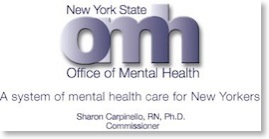
Speaking Out
Against Attachment Therapy
A number of important organizations and prominent people have gone on record for being against either Attachment Therapy (in one form or another) or non-emergency (i.e., coercive) use of restraints, providing position statements, resolutions, practice guidelines, and personal statements. Below is a sampling of them.
Please note that mere inclusion on this page does not mean that any of the quoted individuals or organizations necessarily endorse Advocates for Children in Therapy, its aims, or its methods. We have grouped them below into three categories:
• US and Other National Organizations
• Prominent Persons
• State Organizations and Locally Prominent Persons
* Special Task Force Report *
In 2006, the highly respected American Professional Society on the Abuse of Children (APSAC) published “Report of the APSAC Task Force on Attachment Therapy, Reactive Attachment Disorder, and Attachment Problems.” These findings and recommendations made by the APSAC Task Force regarding Attachment Therapy were immediately adopted by the American Psychological Association’s Division on Child Maltreatment. The recommendations call for a halt to the use of Attachment Therapy, its highly authoritarian parenting methods (aka Nancy Thomas parenting), and use of the unrecognized definition of Reactive Attachment Disorder. These organizations call on child welfare workers to investigate where Attachment Therapy/Parenting methods are used as suspected child abuse.
The National Criminal Justice Reference Service reports “APSAC rejects therapies that involve physical coercion and restraint, physical domination of the child, the ventilation of rage, humiliation, and withholding or forcing food or water intake. Behavioral interventions that increase parental sensitivity are recommended.” The report has “also been endorsed by the American Psychological Association's Division 37 and the Division 37 Section on Child Maltreatment.”
US and Other National Organizations:
Supreme Court of the United States We consider here for the first time the substantive rights of involuntarily committed mentally retarded persons under the Fourteenth Amendment to the Constitution. In this case, respondent has been committed under the laws of Pennsylvania, and he does not challenge the commitment. Rather, he argues that he has a constitutionally protected liberty interest in safety, freedom of movement, and training within the institution; and that petitioners infringed these rights …
The mere fact that Romeo has been committed under proper procedures does not deprive him of all substantive liberty interests under the Fourteenth Amendment. Indeed, the State concedes that respondent has a right to adequate food, shelter, clothing, and medical care. We must decide whether liberty interests also exist in safety, freedom of movement, and training.
… [R]espondent claims a right to freedom from bodily restraint. In other contexts, the existence of such an interest is clear in the prior decisions of this Court. Indeed, "[l]iberty from bodily restraint always has been recognized as the core of the liberty protected by the Due Process Clause from arbitrary governmental action." This interest survives criminal conviction and incarceration. Similarly, it must also survive involuntary commitment. …
In deciding this case, we have weighed those postcommitment interests cognizable as liberty interests under the Due Process Clause of the Fourteenth Amendment against legitimate state interests and in light of the constraints under which most state institutions necessarily operate. We repeat that the State concedes a duty to provide adequate food, shelter, clothing, and medical care. These are the essentials of the care that the State must provide. The State also has the unquestioned duty to provide reasonable safety for all residents and personnel within the institution. And it may not restrain residents except when and to the extent professional judgment deems this necessary to assure such safety or to provide needed training. In this case, therefore, the State is under a duty to provide respondent with such training as an appropriate professional would consider reasonable to ensure his safety and to facilitate his ability to function free from bodily restraints.
— Justice Powell, writing for a unanimously concurring Court in Youngberg vs. Romeo [457 US 307, 18 June 1982] ![]()

United States Congress and President William J. Clinton
Amending Title V of the Public Health Service Act, to provide a new section (42 USC 595 [now 42 USC 290jj]), to wit:
(a) Protection of Rights.— (1) In general.—A public or private non-medical, community-based facility for children and youth (as defined in regulations to be promulgated by the Secretary) that receives support in any form from any program supported in whole or in part with funds appropriated under this Act shall protect and promote the rights of each resident of the facility, including the right to be free from physical or mental abuse, corporal punishment, and any restraints or involuntary seclusions imposed for purposes of discipline or convenience. …
(b) Requirements.— (1) In general.—Physical restraints and seclusion may only be imposed on a resident of a facility described in subsection (a) if— (A) the restraints or seclusion are imposed only in emergency circumstances and only to ensure the immediate physical safety of the resident, a staff member, or othersand less restrictive interventions have been determined to be ineffective; and
(B) the restraints or seclusion are imposed only by an individual trained and certified, by a State-recognized body (as defined in regulation promulgated by the Secretary) and pursuant to a process determined appropriate by the State and approved by the Secretary, in the prevention and use of physical restraint and seclusion, including the needs and behaviors of the population served, relationship building, alternatives to restraint and seclusion, de-escalation methods, avoiding power struggles, thresholds for restraints and seclusion, the physiological and psychological impact of restraint and seclusion, monitoring physical signs of distress and obtaining medical assistance, legal issues, position asphyxia, escape and evasion techniques, time limits, the process for obtaining approval for continued restraints, procedures to address problematic restraints, documentation, processing with children, and follow-up with staff, and investigation of injuries and complaints. …
(d) Definitions.—In this section: … (3) Physical restraint.—The term “physical restraint” means a personal restriction that immobilizes or reduces the ability of an individual to move his or her arms, legs, or head freely. Such term does not include a physical escort. …
— Sec. 3208 of Children’s Health Act of 2000 (P.L. 106-310) [114 Stat. 1195-1196; signed 17 October 2000] ![]()
 Individuals with mental illness or mental retardation residing in state-operated facilities have certain basic rights that have been recognized by federal courts.
People with mental illness or mental retardation in residential settings are among the most vulnerable members of our society. Protecting them from abuse and injury is a responsibility of the federal government, the states, the treatment facilities, and the [Protection and Advocacy] system. However, the safeguards currently in place are not comprehensive and fail to fully ensure the rights and safety of these individuals. The use of restraint and seclusion represents a significant risk to such individuals …
We recommend that … protections regarding the use of restraint and seclusion are consistent by extending to all individuals receiving treatment in Medicare- and Medicaid-funded facilities … These protections include a right to be free from any physical or chemical restraints or seclusion imposed for the purposes of coercion, discipline, or staff convenience …
— GAO Report HEHS-99-176: Improper Restraint or Seclusion Use Places People at Risk [September 1999]
Individuals with mental illness or mental retardation residing in state-operated facilities have certain basic rights that have been recognized by federal courts.
People with mental illness or mental retardation in residential settings are among the most vulnerable members of our society. Protecting them from abuse and injury is a responsibility of the federal government, the states, the treatment facilities, and the [Protection and Advocacy] system. However, the safeguards currently in place are not comprehensive and fail to fully ensure the rights and safety of these individuals. The use of restraint and seclusion represents a significant risk to such individuals …
We recommend that … protections regarding the use of restraint and seclusion are consistent by extending to all individuals receiving treatment in Medicare- and Medicaid-funded facilities … These protections include a right to be free from any physical or chemical restraints or seclusion imposed for the purposes of coercion, discipline, or staff convenience …
— GAO Report HEHS-99-176: Improper Restraint or Seclusion Use Places People at Risk [September 1999] ![]()
 [Formerly the Health Care Financing Administration]
This rule … sets forth a Condition of Participation (CoP) that psychiatric residential treatment facilities that are not hospitals must meet to provide, or to continue to provide, the Medicaid inpatient psychiatric services benefit to individuals under age 21. Specifically, this rule establishes standards for the use of restraint or seclusion that psychiatric residential treatment facilities must have in place to protect the health and safety of residents. This CoP acknowledges a resident’s right to be free from restraint or seclusion except in emergency safety situations.
… On July 2, 1999, we published in the Federal Register an interim final rule that addressed, in part, the use of restraint and seclusion in hospitals, including psychiatric hospitals … We conducted substantial academic research on the issue of restraint and seclusion, which was discussed in the referenced hospital interim final rule. Although the research primarily involved elderly patients, its findings, we believe, are also relevant to individuals under age 21.
… Any order for restraint or seclusion must be the least restrictive intervention that is most likely to be effective in resolving the emergency safety situation based on consultation with staff and must be limited to no longer than the duration of the emergency safety situation.
— Interim Final Rule, Use of Restraint and Seclusion in Psychiatric Residential Treatment Facilities Providing Psychiatric Services to Individuals Under Age 21 [42 CFR Parts 441 and 483; 21 January 2001]
[Formerly the Health Care Financing Administration]
This rule … sets forth a Condition of Participation (CoP) that psychiatric residential treatment facilities that are not hospitals must meet to provide, or to continue to provide, the Medicaid inpatient psychiatric services benefit to individuals under age 21. Specifically, this rule establishes standards for the use of restraint or seclusion that psychiatric residential treatment facilities must have in place to protect the health and safety of residents. This CoP acknowledges a resident’s right to be free from restraint or seclusion except in emergency safety situations.
… On July 2, 1999, we published in the Federal Register an interim final rule that addressed, in part, the use of restraint and seclusion in hospitals, including psychiatric hospitals … We conducted substantial academic research on the issue of restraint and seclusion, which was discussed in the referenced hospital interim final rule. Although the research primarily involved elderly patients, its findings, we believe, are also relevant to individuals under age 21.
… Any order for restraint or seclusion must be the least restrictive intervention that is most likely to be effective in resolving the emergency safety situation based on consultation with staff and must be limited to no longer than the duration of the emergency safety situation.
— Interim Final Rule, Use of Restraint and Seclusion in Psychiatric Residential Treatment Facilities Providing Psychiatric Services to Individuals Under Age 21 [42 CFR Parts 441 and 483; 21 January 2001] ![]()
![]() I have made reducing the use of restraint and seclusion a top priority. This intervention — whether chemical or physical — is not a treatment at all. It is a product of treatment failure. In fact, restraint and seclusion, at best, should be a safety measure of last resort, used only when all other options have failed.
— Charles G. Curie, Administrator [28 January 2003]
I have made reducing the use of restraint and seclusion a top priority. This intervention — whether chemical or physical — is not a treatment at all. It is a product of treatment failure. In fact, restraint and seclusion, at best, should be a safety measure of last resort, used only when all other options have failed.
— Charles G. Curie, Administrator [28 January 2003] ![]()
 PC.10.10 — When provided, behavior management and treatment interventions are utilized in accordance with a process established by care, treatment, and service leaders.
PC.10.40 — Behavior management and treatment interventions support the acquisition and reinforcement of adaptive/replacement behaviors.
PC.10.50 — An individualized behavior management and treatment intervention plan is aligned with the needs and assessment results and documented in the clinical/case record in accordance with organization policy.
PC.10.60 — Each behavior management and treatment plan that includes the use of aversive procedures is reviewed and approved by both appropriate clinical leaders and a person(s) external to the organization, such as an outside expert, an advocate, or a human rights committee.
PC.10.70 — Organization policy specifies procedures that are prohibited.
PC.12.30 — Staff is trained and competent to minimize the use of restraint and seclusion, and when use is indicated, to use restraint or seclusion safely.
PC.12.50 — Non-physical techniques are the preferred intervention in behavior management.
PC.12.60 — Restraint or seclusion use is limited to emergencies in which there is an imminent risk of a client physically harming himself or herself, staff, or others, and non-physical interventions would not be effective.
PC.12.170 — Clinical/case records document that the use of restraint or seclusion is consistent with organization policy.
PC.12.190 — Organization policies and procedures address prevention of restraint and seclusion and, when employed, guide their use.
— 2004-2005 Provision of Behavioral Health Care, Treatment, and Services Standards [effective 1 January 2004]
PC.10.10 — When provided, behavior management and treatment interventions are utilized in accordance with a process established by care, treatment, and service leaders.
PC.10.40 — Behavior management and treatment interventions support the acquisition and reinforcement of adaptive/replacement behaviors.
PC.10.50 — An individualized behavior management and treatment intervention plan is aligned with the needs and assessment results and documented in the clinical/case record in accordance with organization policy.
PC.10.60 — Each behavior management and treatment plan that includes the use of aversive procedures is reviewed and approved by both appropriate clinical leaders and a person(s) external to the organization, such as an outside expert, an advocate, or a human rights committee.
PC.10.70 — Organization policy specifies procedures that are prohibited.
PC.12.30 — Staff is trained and competent to minimize the use of restraint and seclusion, and when use is indicated, to use restraint or seclusion safely.
PC.12.50 — Non-physical techniques are the preferred intervention in behavior management.
PC.12.60 — Restraint or seclusion use is limited to emergencies in which there is an imminent risk of a client physically harming himself or herself, staff, or others, and non-physical interventions would not be effective.
PC.12.170 — Clinical/case records document that the use of restraint or seclusion is consistent with organization policy.
PC.12.190 — Organization policies and procedures address prevention of restraint and seclusion and, when employed, guide their use.
— 2004-2005 Provision of Behavioral Health Care, Treatment, and Services Standards [effective 1 January 2004]
American Psychiatric Association
While some therapists have advocated the use of so-called coercive holding therapies and/or “re-birthing techniques”, there is no scientific evidence to support the effectiveness of such interventions. In fact, there is a strong clinical consensus that coercive therapies are contraindicated in [reactive attachment] disorder. And unfortunately, as recent events attest, such unproven and unconventional therapies can also have tragic consequences.
— APA Assembly and Board of Trustees [May/June 2002]
American Psychiatric Nurses Association
APNA supports a sustained commitment to the reduction of seclusion and restraint and advocates for continued research to support evidence based practice for the prevention and management of behavioral emergencies. Furthermore, we recognize the need for and are committed to working together with physicians, clients and families, advocacy groups, other health providers and our nursing colleagues in order to achieve the vision of eliminating seclusion and restraint. …
Clients have the right to be treated with respect and dignity and in a safe, humane, culturally sensitive and developmentally appropriate manner that respects client choice and maximizes self determination. … Seclusion and restraint reduction requires preventative interventions at both the individual and milieu management levels using evidence based practice. Seclusion and restraint use is influenced by the organizational culture of a setting that develops norms for how patients are treated. Seclusion and restraint reduction efforts must include a focus on necessary culture change.
— Position Statement [Board approved 15 May 2000]
American Psychology Association
Miss Newmaker was subjected to a technique that should not be termed “psychotherapy” and, rather than being therapeutic, was clearly harmful. … While APA does not maintain a list of “approved” psychotherapy techniques, our mission statement directs us to use psychology to promote health and human welfare. Consistent with that mandate, we condemn the use of this [Attachment Therapy] technique as a therapeutic intervention. The “rebirthing” procedure as practiced in the Newmaker case was clearly not grounded in psychological research, theory, or practice, and should not have been attempted.
— Philip G. Zimbardo, President; Norine G. Johnson, Past-President; Robert J. Sternberg, President-Elect [22 July 2002]  The health and safety of patients are paramount, and even one tragic death or serious injury resulting from the use of restraint and seclusion is unacceptable. Restraint and seclusion are emergency interventions used to prevent patients from harming themselves, health care workers, or others. When used properly, restraint and seclusion are lifesaving and injury-sparing emergency interventions. However, restraint and seclusion should only be used when less restrictive methods are considered and are not feasible.
— Annual Meeting Paper [2000]
The health and safety of patients are paramount, and even one tragic death or serious injury resulting from the use of restraint and seclusion is unacceptable. Restraint and seclusion are emergency interventions used to prevent patients from harming themselves, health care workers, or others. When used properly, restraint and seclusion are lifesaving and injury-sparing emergency interventions. However, restraint and seclusion should only be used when less restrictive methods are considered and are not feasible.
— Annual Meeting Paper [2000] ![]()
 Seclusion and restraint should only be used as emergency interventions to maintain safety and should be implemented in a manner sensitive to the child’s particular developmental level, any specific vulnerabilities, and the overall treatment goals. The prevention of aggressive behavior requires the combined efforts of the patient, his/her family and the staff working together to achieve optimal results.
— Policy Statement [Council approved 24 October 2000]
Seclusion and restraint should only be used as emergency interventions to maintain safety and should be implemented in a manner sensitive to the child’s particular developmental level, any specific vulnerabilities, and the overall treatment goals. The prevention of aggressive behavior requires the combined efforts of the patient, his/her family and the staff working together to achieve optimal results.
— Policy Statement [Council approved 24 October 2000]
 Use of safe, least-restrictive physical interventions makes good clinical sense. In addition, many organizations have found that working to reduce restraint and seclusion use has helped them strengthen their clinical program by incorporating a broader range of interventions and therapeutic approaches.
— Learning from Each Other: Success Stories and Ideas for Reducing Restraint/Seclusion in Behavioral Health [28 January 2003]
Use of safe, least-restrictive physical interventions makes good clinical sense. In addition, many organizations have found that working to reduce restraint and seclusion use has helped them strengthen their clinical program by incorporating a broader range of interventions and therapeutic approaches.
— Learning from Each Other: Success Stories and Ideas for Reducing Restraint/Seclusion in Behavioral Health [28 January 2003] ![]()
 The members of the National Association of State Mental Health Program Directors (NASMHPD) believe that seclusion and restraint, including “chemical restraints,” are safety interventions of last resort and are not treatment interventions. Seclusion and restraint should never be used for the purposes of discipline, coercion, or staff convenience, or as a replacement for adequate levels of staff or active treatment.
— Position Statement [13 July 1999]
The members of the National Association of State Mental Health Program Directors (NASMHPD) believe that seclusion and restraint, including “chemical restraints,” are safety interventions of last resort and are not treatment interventions. Seclusion and restraint should never be used for the purposes of discipline, coercion, or staff convenience, or as a replacement for adequate levels of staff or active treatment.
— Position Statement [13 July 1999] ![]()
 WHEREAS, The physical restraint of children for purposes other than safety violates the NASW Code of Ethics, which prohibits physical contact that may be harmful; therefore, be it RESOLVED, That the National Association of Social Workers is opposed to the physical restraint of children for purposes other than safety.
WHEREAS, The physical restraint of children for purposes other than safety violates the NASW Code of Ethics, which prohibits physical contact that may be harmful; therefore, be it RESOLVED, That the National Association of Social Workers is opposed to the physical restraint of children for purposes other than safety.
— Delegate Assembly [7 August 2005]
Advocates Coalition for the Appropriate Use of Restraints
The Coalition greatly appreciates the promulgation of regulations on the use of restraint and seclusion for psychiatric residential treatment facilities serving children and youth. As highlighted in the preamble to the regulations, we believe the use of these physical interventions in these settings “presents special hazards and concerns.” Accordingly, we advocate for stringent standards to be applied to this population. Our comments reflect this concern and are generally supportive of these new rules and the Department [of Health and Human Services]’s intent to provide strong protections, in a prescriptive manner, to safeguard the well-being of children and youth.
— Comments on HCFA proposed rules published in the Federal Register [22 March 2001]
 (7.8.1) The use of involuntary mechanical or human restraints or involuntary seclusion is only justified as an emergency safety measure in response to imminent danger to one’s self or others. These extreme measures can be justified only so long as, and to the extent that, the individual cannot commit to the safety of themselves and others.
(7.8.2) Restraint and seclusion have no therapeutic value. They should never be used to “educate patients about socially acceptable behavior;” for purposes of punishment, discipline, retaliation, coercion, and convenience; or to prevent the disruption of the therapeutic milieu. …
(7.8.14) Brief physical holding is a form of temporary physical restraint and is different than “therapeutic holding.” “Therapeutic holding” is not supported by adequate scientific evidence or detailed practice guidelines, and, therefore, is not supported by NAMI as an accepted form of treatment.
(7.8.15) Brief physical holding should only be carried out by professionally recognized and trained mental health professionals licensed by a governmental body.
— Policy Platform of the National Alliance for the Mentally Ill [February 1999]
(7.8.1) The use of involuntary mechanical or human restraints or involuntary seclusion is only justified as an emergency safety measure in response to imminent danger to one’s self or others. These extreme measures can be justified only so long as, and to the extent that, the individual cannot commit to the safety of themselves and others.
(7.8.2) Restraint and seclusion have no therapeutic value. They should never be used to “educate patients about socially acceptable behavior;” for purposes of punishment, discipline, retaliation, coercion, and convenience; or to prevent the disruption of the therapeutic milieu. …
(7.8.14) Brief physical holding is a form of temporary physical restraint and is different than “therapeutic holding.” “Therapeutic holding” is not supported by adequate scientific evidence or detailed practice guidelines, and, therefore, is not supported by NAMI as an accepted form of treatment.
(7.8.15) Brief physical holding should only be carried out by professionally recognized and trained mental health professionals licensed by a governmental body.
— Policy Platform of the National Alliance for the Mentally Ill [February 1999] ![]()
Judge David L. Bazelon Center for Mental Health Law
On behalf of the Judge David L. Bazelon Center for Mental Health Law, I am pleased to offer our support for the Candace Newmaker Resolution of 2002 (H.Con.Res. 435) expressing the sense of the Congress that the harmful and dangerous therapeutic technique known as “rebirthing” should be prohibited. … [It] is an important step toward protecting children from unproven and harmful practices perpetrated in the name of treatment. We applaud [the sponsor’s] leadership on bringing this dangerous procedure to the attention of [Congress] and encouraging states to prohibit its use.
— Laurel Stine, Director of Federal Relations [19 July 2002]
RespectABILITY Law Center
[Member of the initial Steering Committee of APRAIS, formed to promote the elimination of aversives, seclusion and the non-emergency use of restraint, March 2004]
As too many American families have tragically learned, the so-called “rebirthing” technique is fraudulent and dangerous. Even rebirthing’s supposed purpose, helping adoptive parents and their adopted children to forge new bonds, is deluded. The truth is that adoptive parents and their children very rarely have difficulty forging new bonds.
— Patrick Purtill, President [11 July 2002]
 The Association for Persons with Severe Handicaps
TASH, an international advocacy association of people with disabilities, their family members, other advocates and people who work in the disability field, affirms the right of all persons with disabilities to freedom from overly restrictive procedures and from aversive or coercive procedures of any kind. TASH is unequivocally opposed to the inappropriate use of restraint and to the use of overly restrictive and aversive procedures under any circumstance and calls for the cessation of the use of all such procedures.
— Resolution Opposing the Use of Aversive and Restrictive Procedures [25 February 2003]
The Association for Persons with Severe Handicaps
TASH, an international advocacy association of people with disabilities, their family members, other advocates and people who work in the disability field, affirms the right of all persons with disabilities to freedom from overly restrictive procedures and from aversive or coercive procedures of any kind. TASH is unequivocally opposed to the inappropriate use of restraint and to the use of overly restrictive and aversive procedures under any circumstance and calls for the cessation of the use of all such procedures.
— Resolution Opposing the Use of Aversive and Restrictive Procedures [25 February 2003] ![]()
 These tragedies [deaths from Attachment Therapy] are the result of a failure of intellectual and professional rigor in the adoption field, a field essentially run by social workers, and one where there is little or no regulation of the claims made in publications aimed at adoptive parents and rare prudence in screening out quacks who are on the “adoption convention” circuit. … As for advertising, most desperate adoptive parents do not heed the disclaimers that usually precede the ads from solid agencies and programs — as well as quacks — that appear in media designed to serve the adoption field. And far too many of the uncredentialled and untried practitioners have gained credibility on the adoption circuit, speaking either to conferences for lay people or even at adoption agencies.
— William L. Pierce, (late) President and Executive Director for the USA Committee of IAVAAN [18 September 2002]
These tragedies [deaths from Attachment Therapy] are the result of a failure of intellectual and professional rigor in the adoption field, a field essentially run by social workers, and one where there is little or no regulation of the claims made in publications aimed at adoptive parents and rare prudence in screening out quacks who are on the “adoption convention” circuit. … As for advertising, most desperate adoptive parents do not heed the disclaimers that usually precede the ads from solid agencies and programs — as well as quacks — that appear in media designed to serve the adoption field. And far too many of the uncredentialled and untried practitioners have gained credibility on the adoption circuit, speaking either to conferences for lay people or even at adoption agencies.
— William L. Pierce, (late) President and Executive Director for the USA Committee of IAVAAN [18 September 2002] ![]()
[formerly National Association of Protection and Advocacy Systems] The following physical restraint techniques should be prohibited under any circumstances:
(i) restraints that place an individual face-down and/or place pressure on the individual’s back;
(ii) restraints that obstruct the airways of the resident or otherwise impair breathing;
(iii) restraints that obstruct the caregiver’s view of the individual’s face; and
(iv) restraints that restrict the individual’s ability to communicate.
— Gary Gross, Senior Public Policy Counsel [22 March 2001]
 Over the last 5 years, at CIBRA we have received many many emails from parents who have had their children abused and even killed in schools and treatment facilities. The one thing that stands out like a sore thumb is this: As pre-civil rights black communities experienced, no one is ever held responsible for these things done to the cognitively disabled. The child is always guilty unless somehow proven innocent. The law gives educators and treatment professionals almost complete immunity. Mostly it is the U.S. and state governments that hold a sort of absolute power over the lives of the disabled and their parents.
— Informed Consent Violations in Behavioral Treatment/Testimonies [11 July 2003]
Over the last 5 years, at CIBRA we have received many many emails from parents who have had their children abused and even killed in schools and treatment facilities. The one thing that stands out like a sore thumb is this: As pre-civil rights black communities experienced, no one is ever held responsible for these things done to the cognitively disabled. The child is always guilty unless somehow proven innocent. The law gives educators and treatment professionals almost complete immunity. Mostly it is the U.S. and state governments that hold a sort of absolute power over the lives of the disabled and their parents.
— Informed Consent Violations in Behavioral Treatment/Testimonies [11 July 2003] ![]()
Council for Scientific Mental Health Practice
In summary, it is clear that there is no scientific support for the efficacy of holding, rebirthing, reparenting, and related psychological treatments involving coercive levels of physical restraint. Moreover, these practices have been shown to be physically harmful in a number of cases. In addition, they are premised on exceedingly dubious and scientifically questionable grounds. They should therefore be banned before any further harm is done. The banning of such treatments is not an infringement on the freedom of clinical practice, nor on the autonomy of mental health professionals. Instead, it is a crucial and necessary step toward protecting the physical safety and psychological welfare of children and mental health consumers.
— Scott O. Lilienfeld, Executive Director [13 February 2003] ![]()
National Association for Consumer Protection in Mental Health Practices
[I]t is obvious that rebirthing and holding “therapies” are, therefore, different “techniques” of the very same pseudo-treatment known as “coercive restraint therapy” or “coercive restraint techniques.”
— R. Christopher Barden, President [13 February 2003] ![]()
The ARC
Our constituents are frequently subjected to aversive and deprivation procedures that may cause physical and/or psychological harm and are dehumanizing. Furthermore, aversive procedures result in a loss of dignity and inhibit full participation in and acceptance by society. Finally, as more of our constituents move into or remain in the community, there is an urgent need to provide positive behavioral supports in natural settings including the family home. … Interventions must not withhold essential food and drink, cause physical and/or psychological pain, uses drugs as restraints, or produce humiliation or discomfort.
— Congress of Delegates, The Arc of the United States [9 November 2002]
American Association on Intellectual and Developmental Disabilities
[Formerly American Association on Mental Retardation]
Dehumanization of the individual, through means such as social degradation, social isolation, verbal abuse, techniques inappropriate for the individual’s age, and treatment out of proportion to the target behavior … is equally unacceptable whether or not an individual has a disability.
— Board of Directors, AAMR [January 2005]
Federation of Families for Children’s Mental Health
The Federation is strongly opposed to the use of physical, chemical, or mechanical restraints and seclusion with any child but especially for children and youth who have mental, emotional or behavioral disorders or children and youth who have been exposed to violence. We view restraint and seclusion as inhumane, cruel, and ineffective … There is no evidence that the use of restraints or seclusion has any therapeutic benefit whatsoever. …
No service or treatment plan should include provisions for the routine use of seclusion or restraints. …
Holding children should be a loving act not a violent one. Restraining children teaches them that it is acceptable to treat others with physical force when they do things you don’t like. This is a very bad message.
— Position on the Use of Seclusion and Restraints [7 February 2002]
APRAIS
[Member of the initial Steering Committee of APRAIS, formed to promote the elimination of aversives, seclusion and the non-emergency use of restraint, March 2004]
Child & Adolescent Bipolar Foundation
Unfortunately any child who is adopted, even into loving homes at birth, is liable to get diagnosed with attachment disorder because the public and many treatment professionals are unfamiliar with early-onset mood disorders in children. We urge anyone with a child showing these behaviors, or who is told their child has attachment disorder, to have their child evaluated by a board-certified child psychiatrist. Many of our more than 6,000 children were originally given the diagnosis of attachment disorder prior to finding proper treatment for their bipolar disorder.
— Martha Hellander, Executive Director [29 September 2002]
 Proponents of this practice defend it as being “for the child’s own good,” the very same justification that many use for spanking and other punishments. Because it is labeled “therapy”, it can be difficult to regulate this practice by professionals or to help parents to recognize its dangers. … The use of force on a child is always a risk factor, and is never justified unless the child’s life or health is immediately endangered, and there is no better alternative.
— Jan Hunt, Project Director [August 2000]
Proponents of this practice defend it as being “for the child’s own good,” the very same justification that many use for spanking and other punishments. Because it is labeled “therapy”, it can be difficult to regulate this practice by professionals or to help parents to recognize its dangers. … The use of force on a child is always a risk factor, and is never justified unless the child’s life or health is immediately endangered, and there is no better alternative.
— Jan Hunt, Project Director [August 2000] ![]()
 Be wary of organizations that tell you your child has “attachment disorder” and that they need to use a coercive technique to help the child be “reborn” or “vocalize” pain. Bonding with an emotionally damaged child takes time, love, patience, gentle counseling, and more time.
— A Few Notes [3 February 2003]
Be wary of organizations that tell you your child has “attachment disorder” and that they need to use a coercive technique to help the child be “reborn” or “vocalize” pain. Bonding with an emotionally damaged child takes time, love, patience, gentle counseling, and more time.
— A Few Notes [3 February 2003]
 Autism National Committee
Although any one of us, disabled or not, may at some point in our lives need to be restrained on an emergency basis, that should only occur when there is substantial threat of injury to self and others. Behavioral restraints are neither treatment nor education. They are merely procedures or methods that restrict freedom of choice and adversely affect the human development of people with disabilities. The use of restraints should be considered a failure in treatment. We totally condemn the use of behavioral restraints.
— Autcom Position Paper [3 September 1999]
Autism National Committee
Although any one of us, disabled or not, may at some point in our lives need to be restrained on an emergency basis, that should only occur when there is substantial threat of injury to self and others. Behavioral restraints are neither treatment nor education. They are merely procedures or methods that restrict freedom of choice and adversely affect the human development of people with disabilities. The use of restraints should be considered a failure in treatment. We totally condemn the use of behavioral restraints.
— Autcom Position Paper [3 September 1999] ![]()
 [Member of the initial Steering Committee of APRAIS, formed to promote the elimination of aversives, seclusion and the non-emergency use of restraint, March 2004]
[Member of the initial Steering Committee of APRAIS, formed to promote the elimination of aversives, seclusion and the non-emergency use of restraint, March 2004]
National Down Syndrome Society
NDSS opposes the use of aversive interventions and seclusion under any circumstances. Aversive interventions include a broad spectrum of activities that range from clear physical and emotional abuse to more subtle forms of abuse (for example, purposely doing something to a child that he or she has an aversion to even though most children would not be upset by it). Activities that are oppressive, such as restrictions on freedoms that other children enjoy, also fall in this category. …
NDSS opposes the use of any restraints except in emergency situations. An emergency is a crisis situation where restraint is the only recourse that will prevent serious bodily injury. It is unacceptable to allow “emergencies” to develop by the failure to use positive behavioral supports. These supports should be used to prevent a manageable situation from escalating into an emergency. Restraints should never be used on a child with a disability if they would not be used on a non-disabled child in the same situation.
NDSS opposes the use of “consent forms” to validate the use of restraints, aversive treatments or seclusion.
— Position Statement on the Use of Restraints, Aversive Interventions and Seclusion [4 February 2005]
National Austistic Society
The National Autistic Society [United Kingdom] is not seeking to minimise the difficulties faced by these families but there is an onus on clinicians not to exploit the desperate or the vulnerable, nor to make unsubstantiated claims concerning the treatment they offer, particularly when this is hazardous or controversial.
Behavioural and environmental approaches certainly have their place, but only within a context of respect and understanding for the child and the family. No therapeutic programme should be about the misuse of power or use the type of “face down” physical restraint holds depicted in the [2001 Horizon broadcast] documentary. Such interventions are unnecessary, likely to cause emotional or physical harm and have been known to kill. In the context in which Richard saw them applied in the programme he would regard them as being unlawful if used in this country.
— Richard Mills, Director of Services [9 March 2001]
_____________________________________________________________________________
Prominent Persons:
Carol Tavris, author of The Mismeasure of Woman:
The public is largely unaware of the enormous schism that exists between the training of most psychotherapists today and that of psychological scientists. There is no agency or organization to protect people from ignorant or unscrupulous therapists. Anyone can call himself or herself a “psychotherapist” and set up any kind of program as “therapy.” (In contrast, a psychologist must have an advanced degree and be licensed.) Thousands of people get credentials as “experts” in various techniques and therapies — doing hypnosis or hypnotherapy, diagnosing child sexual abuse, doing addiction or “rage reduction” counseling — without learning the methods of science or even the basic research that has been done on these subjects. …
This means that it is up to consumers to think critically in determining what kind of therapy and therapist might be best for their problems. Ask about the therapist’s training and credentials. Ask whether the therapy’s assumptions, methods and effectiveness have been objectively assessed — by something other than testimonials.
[8 February 2001]

Peter Fonagy, Freud Memorial Professor of Psychoanalysis, University College, London:
I’ve major worries about this notion of knocking things down in order to build them up. The normal approach to cheating behavioural disorder of this kind is to help the parents understand the child better. What is so vulnerable in these children is their sense of themselves, their sense of who they are. Now if you are systematically undermining that very fragile, that very vulnerable sense of who that child is you could end up in the situation where the child becomes really very much more depressed and hopeless and helpless.…
I think there’s a real danger in assuming that we know what’s going on in the child’s mind. How do we know that that child is going to interpret two parents trying to restrain him physically as an act of affection? … It’s presumptuous of us to assume that just because it involves that close physical contact it will undoubtedly be interpreted as something that’s positive.…
If you are imposing proximity in the hope that you will impose attachment then you will quickly realise that that’s a paradox. Attachment is perhaps one of the only things in life that one cannot impose. It’s a sense of being understood. If you are forced to sit in somebody’s lap, that’s perhaps the last thing that will make you feel loved by that person.…
[8 Mar 2001] ![]()

Elizabeth F. Loftus, co-author of The Myth of Repressed Memory:
In the name of “curing her” with Attachment Therapy, Candace’s therapists ignored her begging, screaming, and gasping; eventually they were convicted in criminal court. The extent to which some therapists embrace such unvalidated fringe treatments is one of the greatest scandals in today’s mental health system. This damning indictment should stir a badly needed national debate about these practices, and aid in the fight against them.
[30 May 2003]
Richard J. McNally, author of Remembering Trauma:
I … endorse … efforts to ban “holding”, “rebirthing” and related therapies … [T]oo many mental health professionals have been endangering their credibility as well as their clients by applying clinical methods devoid of any empirical support. This ominous trend must be reversed …
[February 2003] ![]()

Frederick Crews, author of The Unauthorized Freud and Postmodern Pooh:
Attachment Therapy … is only the most dangerous embodiment of a more general aberration: the founding of treatments on premises that have already been confuted by sound research.
[30 May 2003]

Michael Shermer, author of The Science of Good and Evil and editor of Skeptic Magazine:
Candace wasn’t tired; she was dead. … The ultimate cause was pseudoscientific quackery masquerading as psychological science. … Other children have died after AT as well. … By whatever name, AT remains a pseudoscience. We should ban its practice before it tortures and kills children again.
[June 2004] ![]()
Carol Lynn Mithers, author of Therapy Gone Mad: Now that the two women face up to 48 years in prison, now that the nation has expressed its outrage at the radical therapy that led to the tragedy and Colorado Gov. Bill Owens has signed “Candace’s Law” banning rebirthing in his state, the temptation is to sit back, breathing a sigh of relief that justice has been done and a horror like this won’t happen again. But it will.
The ‘90s brought treatment for “reactive attachment disorder,” a syndrome in which a deprived or abused child — like Candace — has difficulty forming intimate bonds. … The kind of rebirthing process Candace went through was just one of the experimental therapies devised to cure it; another was “rage reduction therapy,” a rough restraint of children intended to help them understand their emotional estrangement. It, too, led to excesses … Why do otherwise intelligent and well-meaning people embrace treatments that, in retrospect, seem so clearly mad? …
Although ethical, well-trained therapists refuse to go along with these beliefs, those who are less moral or more driven by their own convictions are happy to indulge. And the media, particularly talk shows, with their insatiable appetite for guests to fill airtime, help by parading every new guru who comes along, often without bothering to check out his or her credentials or the theory’s validity.
[6 May 2001]
Beverly James, author of Handbook for Treatment of Attachment-Trauma Problems in Children:
We have an ethical obligation to take a strong, well-voiced position against coercive techniques. We are responsible for the well-being of our children. These techniques have no place in our clinical armamentarium for treating wounded children.
[1994] ![]()

L. Alan Sroufe, author of Child Development: Its Nature and Course:
What I dislike most about [Foster] Cline’s work is that I firmly believe that the majority of the children he calls “unattached” are attached. Bowlby wrote that attachment is an instinctual process. It is going to happen, although the form it takes may not be optimal to the child. … [Is there a method to assess attachment quality that can be used in the typical clinical setting, separate from the Adult Attachment Interview and the Strange Situation?] No valid method is available at this time.
[Fall 2002]

Martha Farrell Erickson, author of Infants, Toddlers & Families: A Framework for Support and Intervention:
Everything I’ve learned about attachment indicates that sensitivity is the pathway to a secure attachment, so I’m uneasy about approaches that are intrusive. I am especially concerned about doing aything with these children that replicates a cycle of violence and control, poking and provoking until the child submits. If some professionals are convinced that arousal approaches are the way to reach these children, then I think those professionals should go out of their way to subject these strategies to rigorous research. And, above all, they should remember, “First, do no harm.”
[Fall 2002]

Jean Mercer, author of Understanding Attachment:
Most of us would be surprised … at a claim that restraint has a therapeutic effect on psychiatric patients. It is equally surprising … that a treatment for emotionally disturbed children deliberately uses restraint and psychological seclusion, and claims to achieve important therapeutic benefits as a result. … Sadly, AT has been associated with more than one death, and its practitioners have not presented acceptable evidence of therapeutic success.
[2001] ![]()

Scott O. Lilienfeld, Editor, Scientific Review of Mental Health Practices:
I am writing to express my strong and unequivocal support for the position adopted by the American Psychiatric Association and several other groups that there is no scientific support whatsoever for coercive restraint therapies. Such increasingly popular treatments include holding therapy, rebirthing, reparenting, and rage reduction therapy. The clinical administration of these treatments is scientifically and ethically indefensible…
[13 Feb 2003] ![]()

R. Christopher Barden, lawyer and psychologist:
There is simply no credible evidence that holding therapy is a “treatment” for anything. To sell such procedures as therapy is unethical and negligent. “Holding therapy” methods, as common sense indicates, are capable of serious damage to patients. Holding therapy methods and procedures remain far outside the accepted bounds of any kind of reputable psychotherapy. Holding therapists should be subject to severe sanctions and penalties by the licensing, criminal and civil justice systems.
[19 Sep 2005]

John K. Rosemond, syndicated columnist and author of New Parent Power:
In my experienced estimation, most of the speculation that abounds concerning so-called “attachment disorder” amounts to psychobabble. The diagnosis is not based on objective criteria; therefore, there is no objective evidence that “attachment disorders” are prevalent among late-adopted children.
[25 November 2003] ![]()
Michelle Malkin, syndicated columnist:
[A]dults who should know better are subjecting their children to … dangerous experiments masquerading as miracle science. … The swindlers and pseudotherapists are all too willing to make a killing — literally — off the reckless, desperate, lazy and blind. Magic, they know, is a lot easier to sell and swallow than the bitter tonic of personal responsibility.
[30 May 2000] ![]()

Eve G. Spratt, Associate Professor of Psychiatry and Behavioral Sciences, Medical University of South Carolina:
A concerning development associated with the growing popularity of the RAD diagnosis is the emergence of novel attachment treatment techniques that lack a sound theoretical basis or empirical support. One of the more controversial and more well known of these treatments is the coercive technique, also known as holding, attachment, or rage-reduction therapy. … Foster or adoptive parents may be solicited to enroll their children in often lengthy and expensive residential attachment treatment programs. Professionals expressing concerns with attachment therapy may be dismissed as misinformed or as having unresolved issues of their own. … Proponents have presented anecdotal statements from parents who attest that attachment therapy worked where all else failed. However, anecdotes aside, the fact remains that there is simply no empirical evidence at present to support the assertion that attachment therapy is more effective, or even as effective, compared to accepted and conventional approaches.
[May 2000] ![]()
Samantha L. Wilson, Truman State University (St Louis, MO):
Until such time as holding techniques can be empirically validated to improve the condition of RAD without excessive stress to the child, parents may be well advised to consider other options in the treatment of a child with RAD.
[January 2001]
William N. Friedrich, Late of the Mayo Clinic:
The “attachment therapy” promulgated by the Attachment Center of Evergreen, Colorado, and its devotees is not derived from the attachment theory developed by John Bowlby and Mary Ainsworth. In fact, this approach is counter to attachment theory along a number of critical dimensions. For example, the intervention suggests that the problem is inherent in the child, a highly individual notion that is in direct contrast to attachment as a relational process. [Spring 2002]
The fact that two children have died in two years demands and immediate and powerful statement: “Holding therapy” and its permutations are not therapeutic, can be thought of only as punishing, and must never be used. [Fall 2002]
Rochelle F. Hanson, Associate Professor of Psychiatry and Behavioral Sciences, Medical University of South Carolina: With respect to diagnosis, it appears that the RAD diagnosis may be overused, particularly among children with a trauma history…[T]here is no empirical evidence for any treatment intervention for attachment disorders at the present time. A reliance on controversial, unproven treatments can have a severely deterimental, even fatal, effect on children. However practitioners assess and target specific behavior and emotional problems, it may be possible to rely on proven, well-established treatment interventions.
[Summer 2002]

Matthew L. Speltz, Professor of Psychiatry and Behavioral Sciences, University of Washington Medical School:
Most children and adolescents are overwhelmed and confused by discussions of their early experiences of maltreatment. It is more appropriate to focus on stabilization of the child’s behavior, coping skills, attainment of critical developmental milestones, and the quality of the adoptive parent-child/adolescent relationship.
[Summer 2002] ![]()

Richard P. Barth, Principal Investigator, National Survey of Child and Adolescent Well-Being, DHHS:
The adoption field’s near obsession with attachment issues as the cause of difficulties in parenting is leading the field astray, in some cases with tragic results. There is no scientific basis that I am aware of that points to attachment problems as a primary cause of parent and child problems or suggests that any of the attachment-based therapies are effective in reducing these problems.
[December 2002]
Robert Kinscherff, Chair, Joint Working Group, American Psychological Association and American Bar Association; Past Chair, Ethics Committee, American Psychological Association:
I concur with the view held by a variety of responsible professional associations and researchers that there is no credible scientific support for coercive restraint as a therapeutic (as opposed to emergency containment) modality, nor its incorporation in putatively psychotherapeutic interventions known variously as “holding therapy,” “rebirthing,” “rage reduction” or “disturbed attachment” therapies. … Given the extraordinary vulnerabilities of already traumatized and attachment-disturbed children, I am especially concerned should coercive restraint methods with children be utilized by adherents without careful attention to the legal duty of informed consent (including full disclosure of potential risks and alternatives), and meticulous data-gathering regarding the methods used.
[13 February 2003] ![]()

Kathleen Gee, President, The Association for Persons with Severe Handicaps:
Every day in this country, vulnerable children with disabilities are being brought down to the ground and straddled by program staff, slapped and pinched, deprived of food, secluded in locked closets and more. Amazingly, these abuses are often considered part of children’s education and treatment plans, and are carried out by the very adults entrusted with their care, protection and development. If parents used restraints and aversive procedures in their homes as some schools and service providers routinely do, they would face criminal charges and lose custody of their children.
[16 April 2004]
_____________________________________________________________________________
State Organizations and Locally Prominent Persons:
Massachusetts State Organizations and Persons
 In November 2000, the Massachusetts Department of Mental Health, through its Licensing and Child/Adolescent Services Divisions, embarked on a mission to reduce and ultimately eliminate the use of restraint and seclusion in all child and adolescent inpatient and intensive residential treatment facilities in the state. By the end of August 2002, episodes of restraint and seclusion (per 1,000 patient days) had decreased 72.9%, 47.4% and 59%, respectively, in child (ages 5-12), adolescent and mixed child/adolescent units. This work is ongoing and is being expanded to include adult facilities as well.
— Restraint/Seclusion Reduction Initiative [12 May 2003]
In November 2000, the Massachusetts Department of Mental Health, through its Licensing and Child/Adolescent Services Divisions, embarked on a mission to reduce and ultimately eliminate the use of restraint and seclusion in all child and adolescent inpatient and intensive residential treatment facilities in the state. By the end of August 2002, episodes of restraint and seclusion (per 1,000 patient days) had decreased 72.9%, 47.4% and 59%, respectively, in child (ages 5-12), adolescent and mixed child/adolescent units. This work is ongoing and is being expanded to include adult facilities as well.
— Restraint/Seclusion Reduction Initiative [12 May 2003] ![]()
New Jersey State Organizations and Persons
New Jersey Association for Infant Mental Health: NJAIMH has felt serious concern about the practice of coercive restraint therapies such as “holding therapy” and has actively opposed them for several years. … NJAIMH supports … the prohibition of coercive restraint practices for several reasons, including research evidence, the lack of congruence of the philosophy behind “holding” with established facts about child development, and the documented occurrence of injuries and deaths in association with coercive restraint and related practices.
— Board of Directors [7 February 2003] ![]()
Family Alliance to Stop Abuse and Neglect: The Family Alliance opposes the use of restraints (either physical or mechanical) and aversive stimuli as punishments or for the purpose of obtaining compliance from individuals with special needs. … Restraints and aversives are not treatment and should never be made a part of any individual’s “behavior intervention plan.”
— Website [June 2004]
 Statewide Parent Advocacy Network: So many people lack sensitivity and are just ignorant of the fact that no matter what issues a child might have, he or she is still a child first. But it is truly incomprehensible to me how so many special educators and other professionals working in special education lose their sensitivity and become caught up in a system that believes that is okay to use force and restraints and other methods to discipline or subdue a child who has significant behavioral challenges. Arm holds, face masks, being tied to a chair or strapped down on a bed. Two, three and sometimes 4 adults wrestling a 10 year-old child to the floor. This is inhuman and immoral. This is a violation of the constitutional rights of our children with disabilities. This is revolting. This is child abuse.
— Debra Fernandez, Director, SPAN Parent Training & Information Center
Statewide Parent Advocacy Network: So many people lack sensitivity and are just ignorant of the fact that no matter what issues a child might have, he or she is still a child first. But it is truly incomprehensible to me how so many special educators and other professionals working in special education lose their sensitivity and become caught up in a system that believes that is okay to use force and restraints and other methods to discipline or subdue a child who has significant behavioral challenges. Arm holds, face masks, being tied to a chair or strapped down on a bed. Two, three and sometimes 4 adults wrestling a 10 year-old child to the floor. This is inhuman and immoral. This is a violation of the constitutional rights of our children with disabilities. This is revolting. This is child abuse.
— Debra Fernandez, Director, SPAN Parent Training & Information Center
New Jersey Parents’ Caucus: [Reportedly favors “Matthew’s Law”, January 2004]
New Jersey Protection and Advocacy: [Reportedly favors “Matthew’s Law”, January 2004]
Cerebral Palsy of New Jersey: [Reportedly favors “Matthew’s Law”, January 2004]
Gerard Costa, Director, Youth Consultation Service, Institute for Infant and Preschool Mental Health (Newark): As we can see by comparing material … conventional child psychotherapy is almost diametrically opposed to AT. Specifically, conventional treament is based on multidisciplinary assessments; AT is not but depends on checklists and mothers’ reports. … Conventional treatment has a minimal risk of iatrogenic effects; AT runs a strong risk. Conventional psychotherapy for children focuses on the why and how of behavior, but AT is concerned with the what, especially with the child’s obedience. In addition, conventional child psychotherapists use calm, respectful language; consider eye contact as a means of communication, not of transformation; treat the child’s communications as genuine; and include all family members in the treatment process, not just the child. In each case, AT has taken the opposite approach. [30 May 2003]
Elizabeth Boggs Center on Developmental Disabilities: [Reportedly favors “Matthew’s Law”, January 2004]
New York State Organizations and Persons

New York State Office of Mental Health:
The staff of facilities shall employ restraint and seclusion only under the following conditions:
(1) when absolutely necessary to protect the patient from injuring himself or herself or others;
(2) when less restrictive techniques have been clinically determined to be inappropriate or insufficient;
(3) such intervention is never used for the convenience of staff or for disciplinary or punishment purposes; and
(4) such intervention is used only as long as necessary to protect the patient from injuring himself or herself or others.
— Part 27 of the Regulations of the Commissioner of OMH [amended 20 March 1997] ![]()
Pennsylvania State Organizations and Persons
Office of Mental Health and Substance Abuse Services: It is the Office of Mental Health and Substance Abuse Services’ belief that seclusion and restraint are not treatment but reflect treatment failure. … The use of seclusion and restraint is often a reflection of a limited model and culture of care that is based on the erroneous belief that restrictive procedures are therapeutic in nature. … Restraint and seclusion are emergency safety interventions, not therapeutic techniques, and should be implemented in a manner designed to protect the individual’s safety, dignity and well-being.
— Gerald F. Radke, Deputy Secretary for Mental Health and Substance Abuse Services [8 April 2002]
E. Patrick Curry, consumer advocate (Pittsburgh): Attachment Therapy developed out of and is enmired within a whole subculture of pseudoscientific, whacky and dangerous therapies. It does not simply stand on its own. It becomes a case study in how the psychology profession’s longstanding tolerance for its lunatic fringe creates the conditions for killer therapies to thrive.
Texas State Organizations and Persons
David Waller
David Waller, Chairman of Adolescent Psychiatry, University of Texas Southwestern Medical Center (Dallas): Unfortunately, I think [rage reduction] just reenacts some of the difficulties, in terms of producing a lot of anger, and sometimes perhaps causing more distress.
[19 April 2001] ![]()
Shannon-Bridget Maloney
Claims of quick cures and anyone promising a “different” child in two weeks are preposterous. Parents and professionals who to claim that traditional therapies do not work on Reactive Attachment Disorder must be reminded that their statement is not supported by scientific evidence and that there is no excuse for torturing a child in the name of therapy.
[24 July 2003] ![]()
Utah State Organizations and Persons
Utah NASW: A skilled therapist can teach parents how to respond to their child in a way that promotes attachment. Whereas there is scientific evidence that these noncoercive treatment strategies can be effective in the treatment of Reactive Attachment Disorder, there is no such evidence for coercive holding therapies — therapies that involve restraint or the purposeful infliction of pain on children as a means of evoking a strong emotional response. Coercive holding therapies cannot, in fact, be responsibly subjected to empirical research. No Institutional Review Board could approve research of this type … Furthermore, there is mounting clinical evidence that coercive holding therapies have harmful effects including physical and emotional injury and even death.
The National Association of Social Workers, Utah Chapter hereby asserts that coercive holding therapies constitute a violation of the primary responsibility of social workers to promote the well-being of clients as iterated in Section 1 of the NASW Code of Ethics.
— Executive Committee, Board of Directors [3 December 2002]
![]() Deseret Morning News: While a parent may not know what is considered best practice or even accepted practice for treating reactive attachment disorders, a licensed professional had better. It strains logic that a reputable mental health professional would recommend a therapy that has not withstood scientific review and has not been endorsed by reputable psychiatric organizations. …
Lawmakers need to ask a lot of these question[s] as this matter winds through the legislative process. Whatever they do, they can’t nibble around the edges of this issue. A compromise would be tacit approval of unproven approaches that have great potential for harm and are highly suspect in their effectiveness. It is unthinkable that legislators could sanction these practices in any form.
— Editorial [20 November 2002]
Deseret Morning News: While a parent may not know what is considered best practice or even accepted practice for treating reactive attachment disorders, a licensed professional had better. It strains logic that a reputable mental health professional would recommend a therapy that has not withstood scientific review and has not been endorsed by reputable psychiatric organizations. …
Lawmakers need to ask a lot of these question[s] as this matter winds through the legislative process. Whatever they do, they can’t nibble around the edges of this issue. A compromise would be tacit approval of unproven approaches that have great potential for harm and are highly suspect in their effectiveness. It is unthinkable that legislators could sanction these practices in any form.
— Editorial [20 November 2002]
 DSAMH: Treat the “real” mental health issues of a child, but do not “pathologize” the normal reactions to the transitions, such as grief and loss, divided loyalties, identity crisis, and other predictable adoption issues. Labeling a child as disordered because of his adoption related issues is a great disservice to the child and family. Avoid therapists and therapies that make the child and their adoption issues more pathological than they really are.
— Child and Family Services Update [10 December 2002]
DSAMH: Treat the “real” mental health issues of a child, but do not “pathologize” the normal reactions to the transitions, such as grief and loss, divided loyalties, identity crisis, and other predictable adoption issues. Labeling a child as disordered because of his adoption related issues is a great disservice to the child and family. Avoid therapists and therapies that make the child and their adoption issues more pathological than they really are.
— Child and Family Services Update [10 December 2002]
 Utah Department of Child and Family Services: Rather than just seeking attachment “therapy” for a child’s disorder, we need to pay careful attention to how we can preserve and nurture the significant attachments a child previously had, now has, or is attempting to form in his life. We must become far more “proactive” in creating nurturing transitions that help a child maintain his previous attachments while facilitating the new attachments. This is done within the child’s family systems, not just with the child in an isolated therapeutic setting.
— Child and Family Services Update [10 December 2002]
Utah Department of Child and Family Services: Rather than just seeking attachment “therapy” for a child’s disorder, we need to pay careful attention to how we can preserve and nurture the significant attachments a child previously had, now has, or is attempting to form in his life. We must become far more “proactive” in creating nurturing transitions that help a child maintain his previous attachments while facilitating the new attachments. This is done within the child’s family systems, not just with the child in an isolated therapeutic setting.
— Child and Family Services Update [10 December 2002]
Utah Psychological Association: Despite multiple cases of injury and/or actual deaths of children treated with these so-called therapy techniques, a few therapists continue to advocate their use. The Utah Psychological Association, as well as a number of other professional organizations, maintains that there is no scientific evidence to support the effectiveness of such interventions. In addition, coercive therapy techniques are contrary to most State and mental health facility regulations … There is a strong clinical consensus that coercive therapy techniques are, in fact, contraindicated and potentially dangerous, constituting a form of physical and/or emotional child abuse. The Utah Psychological Association, therefore, strongly opposes the use of coercive therapy techniques.
— Official Position Statement [Board approved 17 January 2003] ![]()
 U Foster Success: Physical restraint should only be used in emergency circumstances for safety, not as a scheduled treatment. We are extremely troubled that coercive restraint is being used on any child to provoke discomfort, rage, or fear, but our concern is deepened even further to hear that it is being used on children with past histories of abuse and neglect. Children who have experienced trauma like abuse are exceptionally vulnerable. We must immediately prohibit this risky, experimental, and discredited form of therapy …
— Board of Directors [4 February 2003]
U Foster Success: Physical restraint should only be used in emergency circumstances for safety, not as a scheduled treatment. We are extremely troubled that coercive restraint is being used on any child to provoke discomfort, rage, or fear, but our concern is deepened even further to hear that it is being used on children with past histories of abuse and neglect. Children who have experienced trauma like abuse are exceptionally vulnerable. We must immediately prohibit this risky, experimental, and discredited form of therapy …
— Board of Directors [4 February 2003] ![]()
Utah PTA: Utah PTA has taken a support position on the first substitute HB 5 “Prohibition of Coercive Restraint Practices.”
— Susan Dayton, President [12 February 2003] ![]()
Russell Seigenberg, Bear River Mental Health Center (Logan); Board Member, Association of Mormon Counselors and Psychotherapists: I do not condone or support Holding Therapy because there are abusive elements associated with its practice. I’m sure there is a better way to accomplish things.
[18 Feb 2003] ![]()
Utah Association for Marriage and Family Therapy: Consistent with other state and national mental health professional organizations, the Utah Association for Marriage and Family Therapy takes the position that any coercive therapy technique is a violation of the profession’s Code of Ethics, which requires that marriage and family therapists respect the rights of clients and obligates them to use therapeutic treatments safely and appropriately.
— Coercive Therapy Techniques Position Statement [February 2003] ![]()
The Utah Counseling Association supports the proposal that use of coercive and restraint techniques by any mental health therapist is a violation of professional ethics. Furthermore, the use of such techniques by any counselor should be met with sanctions imposed by the Department of Professional Licensing. The acceptance of only valid techniques and use of restraint is well outlined in the MANDT guidelines. … The Utah Counseling Association urges the acceptance of legislation in the code against coercive restraint therapies and techniques.
— Dean Workman, President-Elect [2003] ![]()
Utah Mental Health Counselor’s Association: The Reactive Attachment Disorder diagnosis is a very uncommon childhood disorder. … This condition is extremely difficult to treat and may also be exacerbated by other co-morbid childhood disorders. Diagnosis is exceptionally difficult and family history and the child history of relationships with caregivers is essential. Treatment requires both a family willing to assist in reparative life events and professional guidance to assist the family in developing the structure that allows for the positive growth of trusting relationships. …
While behaviors, especially those of aggressiveness leading to potential harm to self or others, must be contained; the goal should always be one of de-escalation. There is no support for techniques that use of physical restraint or force to induce rage or re-living a trauma. These techniques are not guided by theory or evidence based study. Most of all, they violate the potential of the non-malfeasance code of the counseling profession.
— Position Statement on the Treatment of Reactive Attachment Disorder and the Use of Coercive Restraint Techniques [2003] ![]()
 [Voices for] Utah Children opposes the use of holding practices on children as a form of therapeutic mental health intervention, unless needed to prevent a child from immediately injuring himself or others. Utah Children finds that holding practices are not supported by the medical and psychiatric communities and no medical evidence exists to support their use.
— Katie Gregory, Policy Analyst [2003]
[Voices for] Utah Children opposes the use of holding practices on children as a form of therapeutic mental health intervention, unless needed to prevent a child from immediately injuring himself or others. Utah Children finds that holding practices are not supported by the medical and psychiatric communities and no medical evidence exists to support their use.
— Katie Gregory, Policy Analyst [2003]

Utah Medical Association: HB5 — Prohibition of Coercive Restraint Therapy [by] Mike Thompson — [UMA Position:] Support — [2003] ![]()
Legislative Coalition for People with Disabilities: [We] look forward to the time when coercive restraint is no longer practiced in Utah. — Jan Ferré [2003]
GrassRoots of Utah: [Supports HB5, outlawing use of coercive restraint in psychotherapy] [2003]
Primary Children’s Medical Center: [Supports HB5, outlawing use of coercive restraint in psychotherapy] [2003]
Intermountain Child and Adolescent Psychiatry: [Supports HB5, outlawing use of coercive restraint in psychotherapy] [2003]
Washington State Organizations and Persons
 It has come to my attention that we have paid by Exception to Policy or contract for a treatment called Holding Therapy, or Rage Reduction Therapy. … Effective immediately no such treatment should be authorized or paid for without prior approval by the Office of the Assistant Secretary. If a Social Worker and family believe this is the only way to treat a child, they should submit a detailed request with justification and support for the treatment. I will review and consider any requests, but I want you to know that I am generally not inclined to approve such treatment.
— Directive, Children’s Administration, Department of Social and Health Services [2002]
It has come to my attention that we have paid by Exception to Policy or contract for a treatment called Holding Therapy, or Rage Reduction Therapy. … Effective immediately no such treatment should be authorized or paid for without prior approval by the Office of the Assistant Secretary. If a Social Worker and family believe this is the only way to treat a child, they should submit a detailed request with justification and support for the treatment. I will review and consider any requests, but I want you to know that I am generally not inclined to approve such treatment.
— Directive, Children’s Administration, Department of Social and Health Services [2002] 
Rosalyn Oreskovich, late Assistant Secretary, Department of Social and Health Services: In my experience, child welfare workers should be wary of individuals offering treatments that sound too good to be true. The use in the community of free lectures that feature clients sharing their stories and claiming success in order to sell the public on new treatments should raise red flags for Social Workers. [Fall 2002]
Lucy Berliner, Research Director, Center for Sexual Assault and Traumatic Stress, Harborview Medical Center (Seattle): It is time that child abuse professionals formally raise concerns about the “attachment therapy” programs that have proliferated across the country. … [S]ome therapeutic regimens of this type appear to be based on dubious or outright erroneous interpretations of established psychological principles and carry significant risks for children. The risks are not only the use of coercive techniques that are likely to exacerbate behavior problems rather than ameliorate them, but also the fact that, in at least a handful of cases, therapists or parents have misapplied them and caused the death of children. [Fall 2002]


